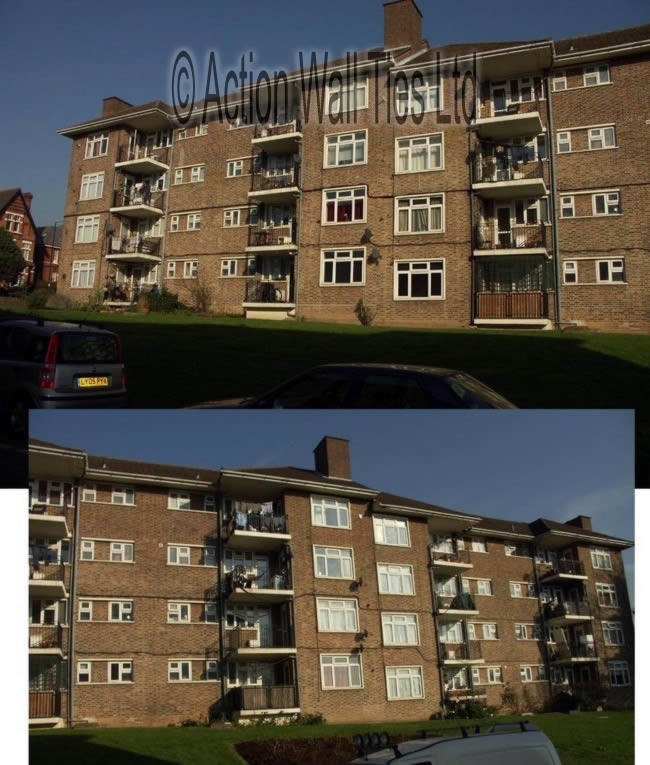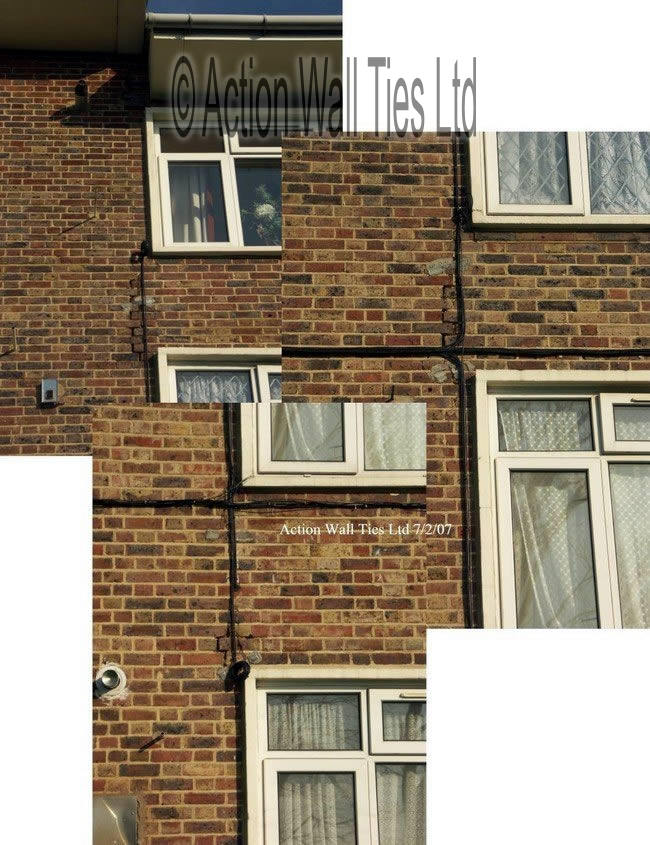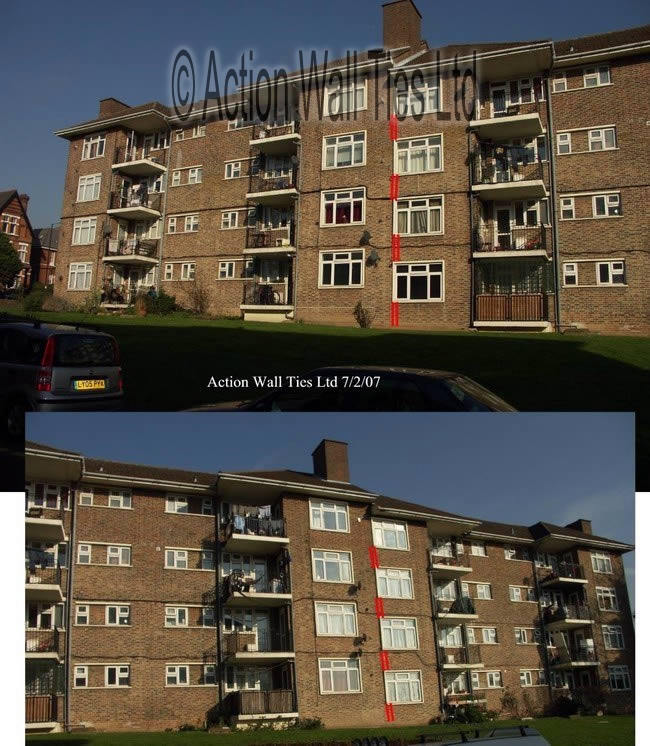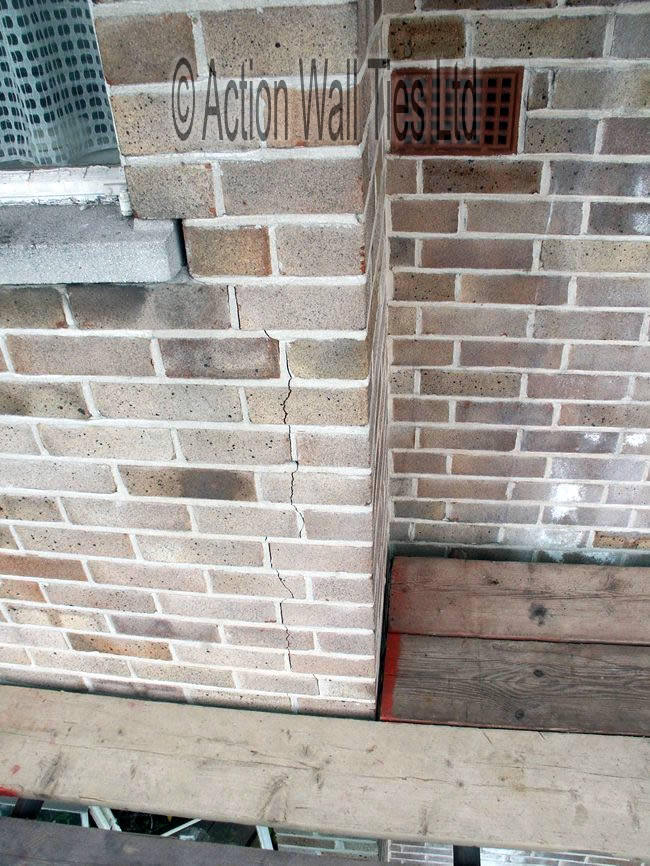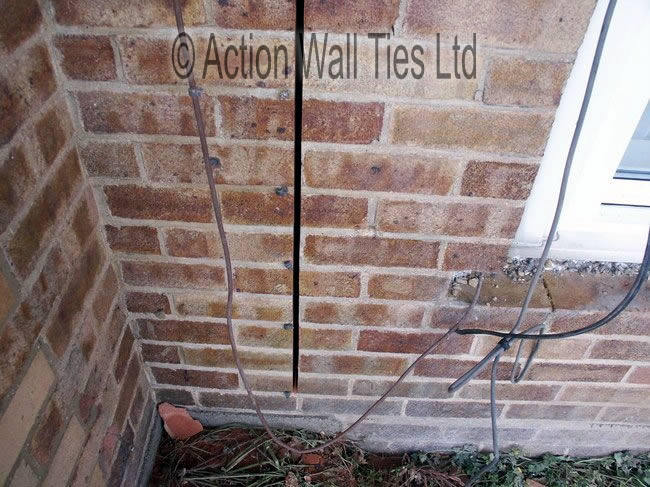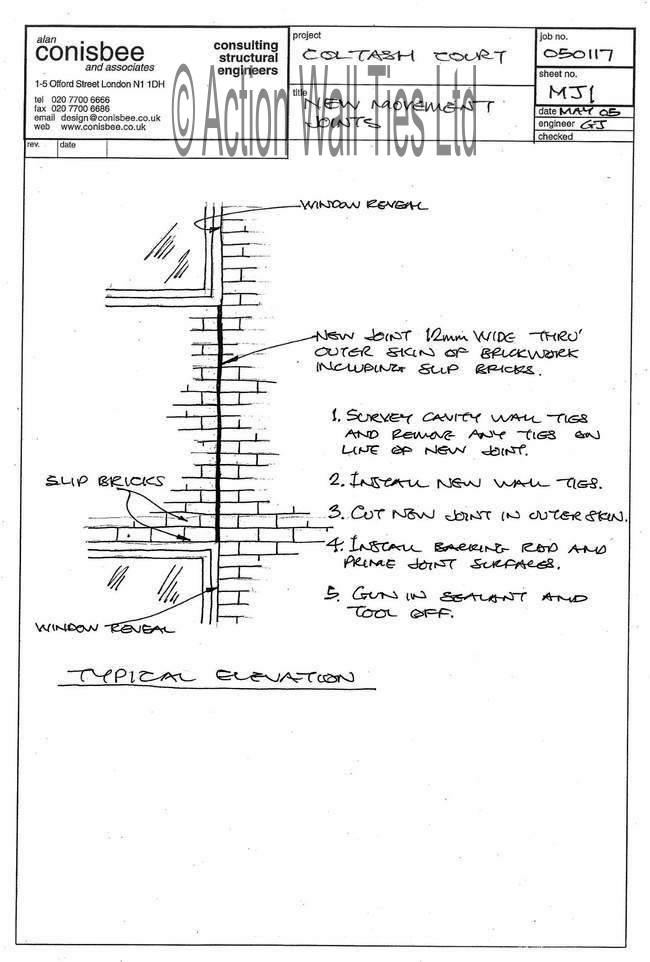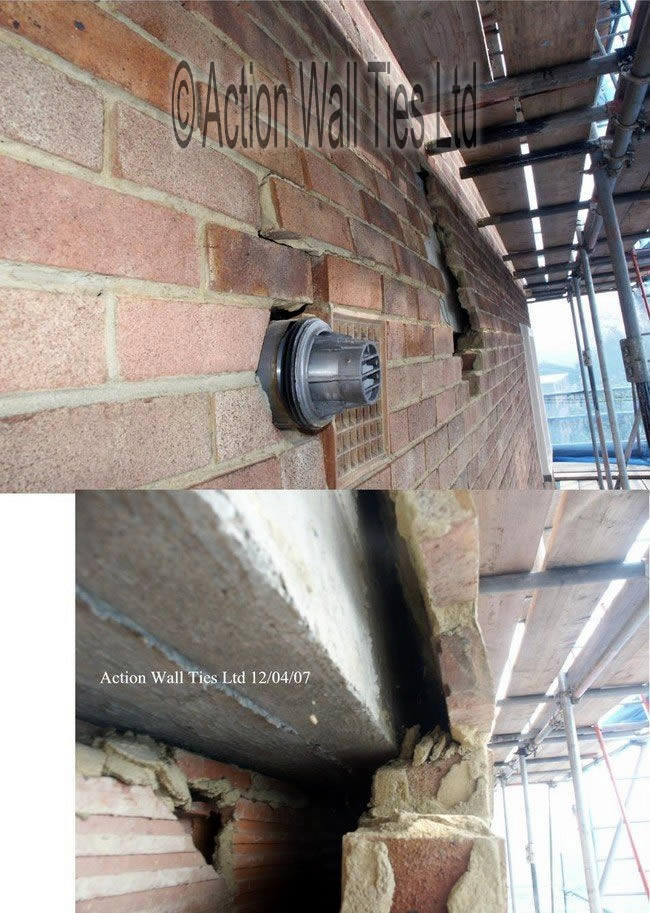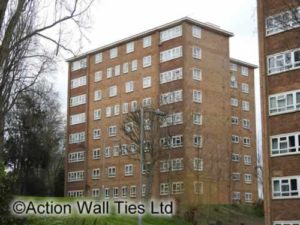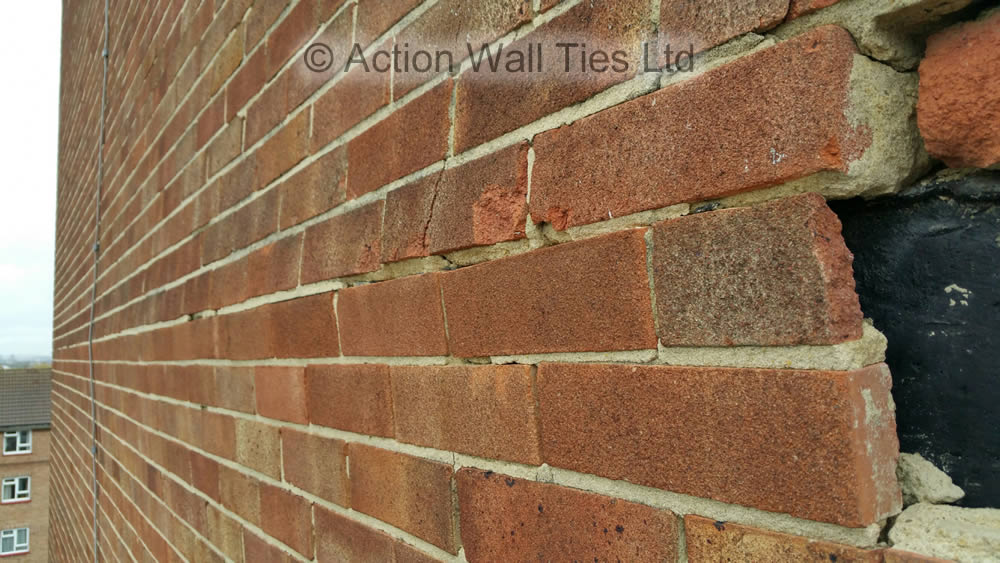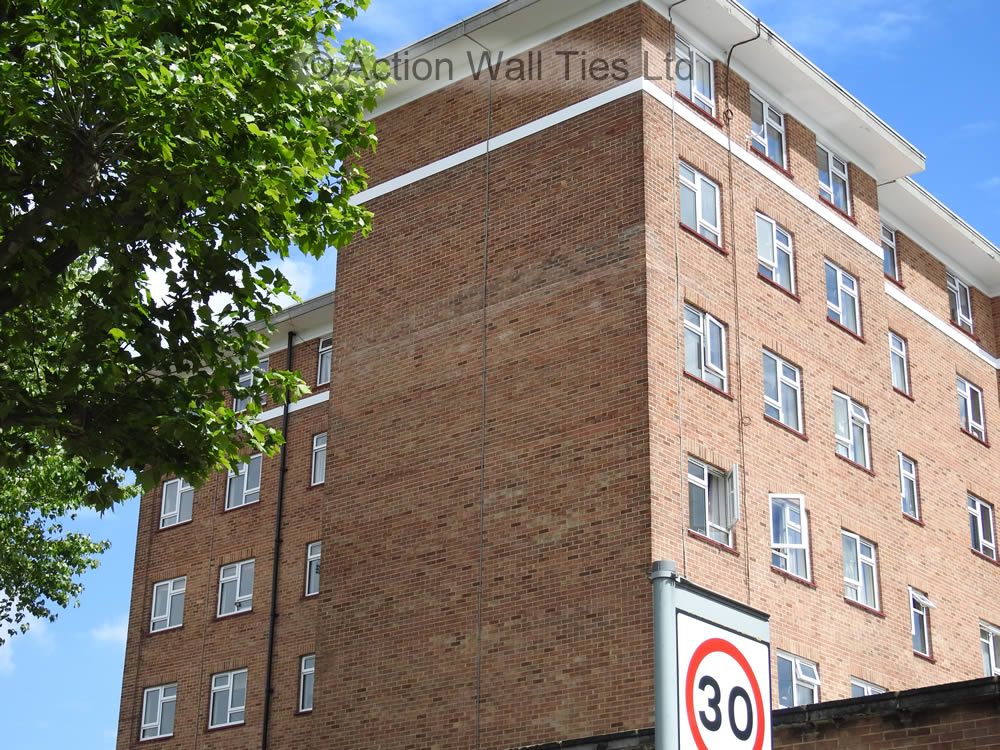1930s style low-rise apartment blocks in London
An estate of 1930s style low-rise blocks of apartments with defective balustrade walls (half-brick thick) to access deck and private balconies – AWT’s remedial scheme – remedial restraint posts, removal of the existing reinforcing rebars.

The subject buildings are 1930s style low-rise blocks of apartments, conventionally built of solid brickwork and concrete floors, with open access decks and private balconies.
Structural Problems
• Visible cracking and previous repairs (in a similar pattern) were noted to the balustrade half-brick thick walls.
• Generally the brickwork and pointing was found to be in good condition, with little spalled pointing and bricks noted. Previous repairs to the access decks and private balconies balustrade half-brick thick walls in a similar pattern were noted.
• All access decks and a representative sample of private balcony balustrade walls were inspected and scanned, locating the reinforcing bar position. Some bars were uncovered, inspected and photographed. In the main, previous repairs correspond to the pattern of the existing reinforcing bars.
• The reinforcing bars uncovered were the old ½ inch rebar bent up from the concrete slab and built into the centre of the brickwork up to, and possibly into, the cast in-situ concrete coping.

Discussion
The existing half brick balustrade walls contained mild steel reinforcing bars. From our investigations it was apparent the damage to the brickwork (cracking/spalling/previous repairs) resulted from the expansive corrosion of these bars which reduced the effectiveness of the bar, especially at the asphalt tuck line leaving the wall vulnerable to failure represent a safety issue.

The reinforcing bars viewed had corroded, delaminated and expanded, rendering the bars ineffective. The half-brick thick balustrade wall’s stability is dependent on the reinforcing.

Wrought iron decorative panels, built in lugs viewed, assessed to be corroded, delaminated and expanded, lifting and cracking the brickwork.
Stuctural Repair Solution
AWT have previously successfully completed remedial schemes to ameliorate similar defects at many other blocks.
AWT’s remedial scheme involved the development of methods and the design of equipment to enable us to undertake the remedial reinforcement, installing restraint posts, expansion joints, removal of the existing reinforcing rebars and thereafter make good the brickwork to the balustrade walls, to the access decks and to the private balconies.
The remedial scheme also alleviated the need for the removal and replacement of the balustrade walls, along with all the associated problems that this would have entailed for the occupants with the added benefits of a considerable cost saving and resulting impact on the environment.
Action Wall Ties (AWT) are specialists in masonry reinforcement and repair, providing professional solutions to a wide variety of structural problems in Kent, London and Surrey. Contact us on 01227 721 255, or email us.

